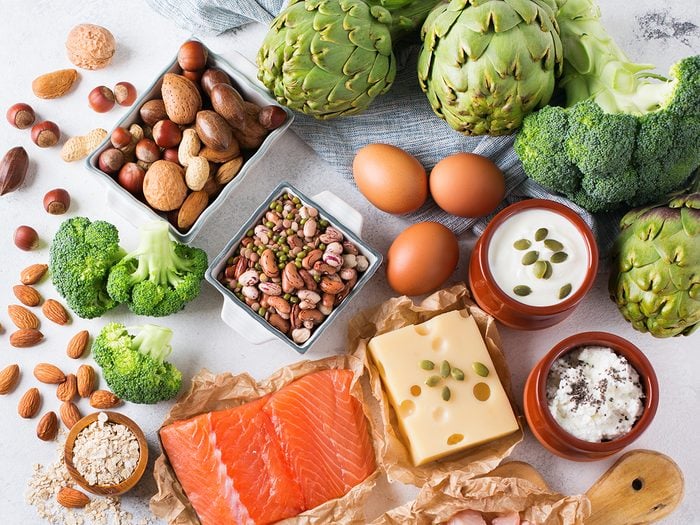
The many benefits of a diet rich in protein
In the new version of Canada’s Food Guide (released January 2019), the category previously called “Meat and Alternatives” has been replaced with advice to “Eat protein foods.” These sources of protein should account for approximately 1/4 of your diet. The rest of your diet should be made up of 1/4 whole grains and 1/2 vegetables and fruits.
Research suggests that eating more protein, in the form of eggs, lean meat, poultry, fish, legumes, nuts and seeds, low-fat dairy products and fortified soy products, can safely promote weight loss and reduce your risk of heart disease. Plus, one of protein’s key benefits is that it may leave you feeling satisfied longer than carbohydrates do, so you actually end up eating less. Plant-based sources of protein can provide more fibre and less saturated fat than other types of protein foods, according to Canada’s Food Guide.
Read on for more on the best sources of protein, including plenty of plant protein options, as well as delicious recipe ideas.

Eggs
One medium egg contains just 66 calories and about 6.8 grams of protein. That means three eggs (198 calories) provide 20.4 grams of protein: the average woman needs about 50 grams a day, so that’s almost half of your daily intake. (Actual protein needs depend on your weight and level of activity; talk to your doctor to get specific requirements for you.) Eating a three-egg Spanish omelette, or three scrambled or poached eggs on toast, will keep you full for hours.
Recipe to try: Spanish-Style Eggs
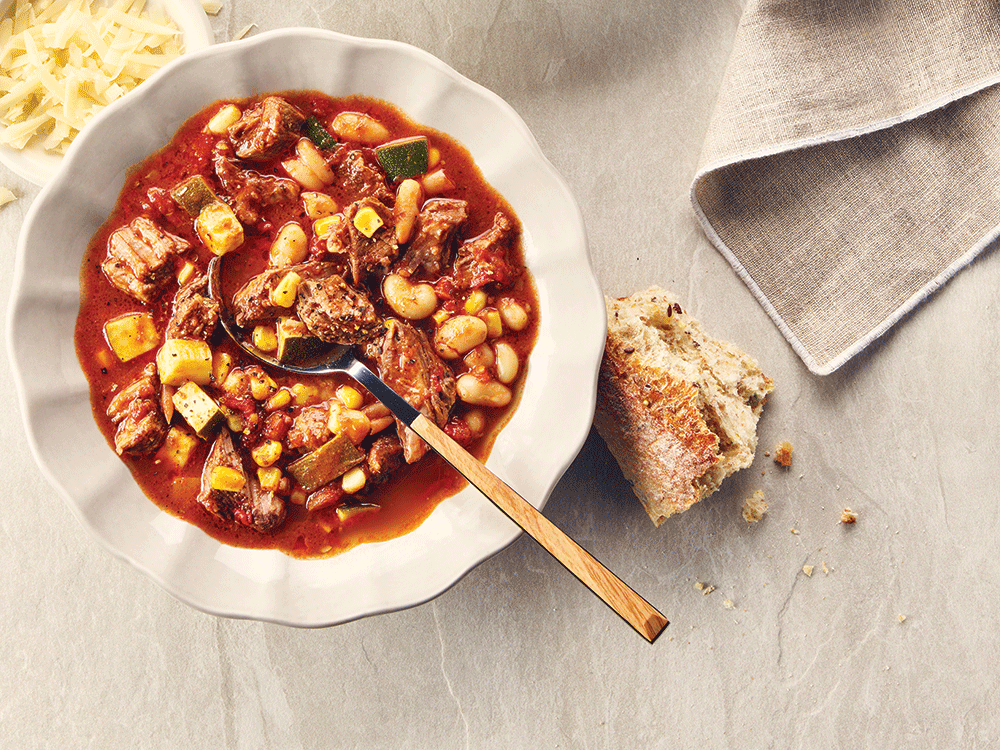
Lean meat
Canada’s Food Guide recommends lean cuts of beef, pork and wild game, as well as turkey and chicken. If red meat is your preferred source of protein, choose the leanest cuts to reduce the added fat. Lean options such as London broil steaks and extra lean ground beef may cost a little more but the benefits are priceless.
The DASH (Dietary Approaches to Stop Hypertension) Diet recommends 3 ounces of cooked lean meat a day. Following this diet can lower your blood pressure by 8.9/4.5 mmHg, reducing your risk of heart disease by 15 percent and your stroke risk by 27 percent.
Recipe to try: Slow Cooker Beef Chili
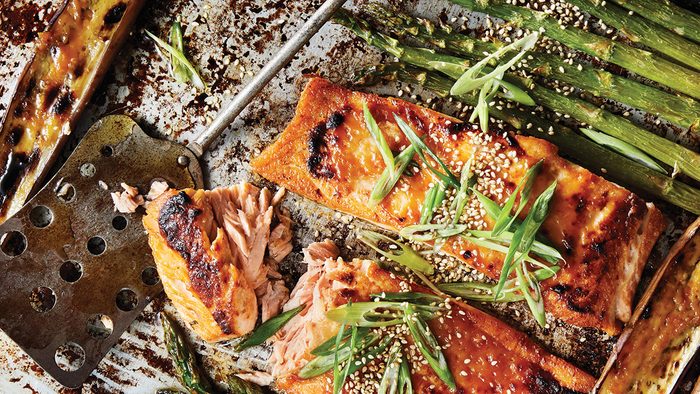
Fish
Most fish contains about the same amount of protein as meat, and provides iron and vitamin B-12, important for energy. It’s also a healthy swap for some popular meat options. For example, ounce for ounce, a salmon steak has one fourth the saturated fat of beef steak. Some great options from Canada’s Food Guide include trout, shrimp, salmon, scallops, sardines and mackerel. Just watch your sodium intake if you’re choosing canned fish.
Recipe to try: Miso-Glaze Baked Salmon

Poultry
Chicken and turkey are great sources of protein and low in saturated fat, especially if you choose skinless white meat. A 3-½ oz piece chicken breast will provide you 21 grams of protein. In addition to protein, poultry provides a good amount of vitamin B and zinc. Turkey even provides other nutrients that are being studied for their connection to alleviating depression.
Recipe to try: Moroccan Turkey Skillet
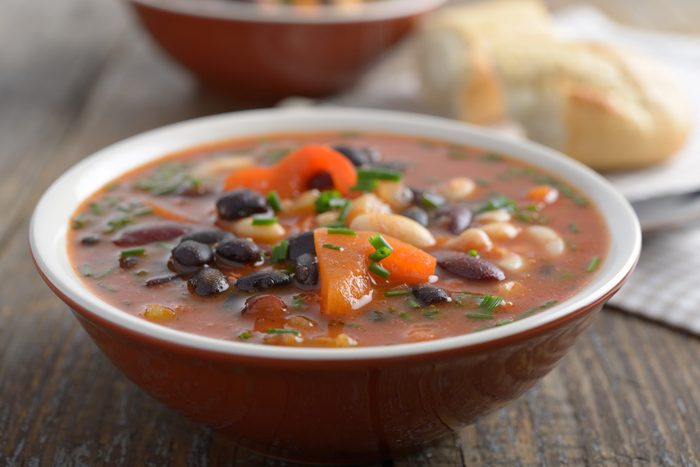
Legumes
Legumes can be considered the perfect food. They contain more protein than any other plant food, are high in complex carbs and low in fat. A cup of cooked lentils will provide nearly 18 grams of protein, comparable to a serving of T-bone steak.
Try brown, red or green lentils, peas such as chickpeas and split peas, and dried beans such as black beans and kidney beans.
Recipe to try: Tuscan Mixed Bean Soup
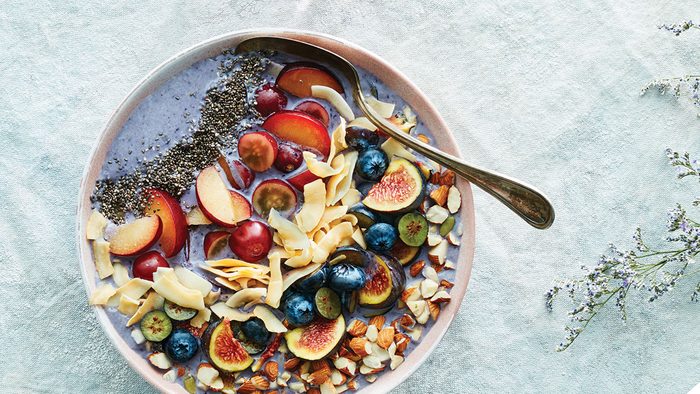
Nuts and seeds
Nuts are a great source of protein and healthy fats (mono and polyunsaturated). They are also a slow-burning food, leaving you feeling full longer. Studies have shown that nuts can even help people lose weight. But it’s important to watch your portion sizes. Stick to just one handful of nuts per serving. Canada’s Food Guide lists peanuts, almonds, cashews, nut butters and sunflower seeds as great sources of protein.
Recipe to try: High-Fibre Apple & Walnut Muesli
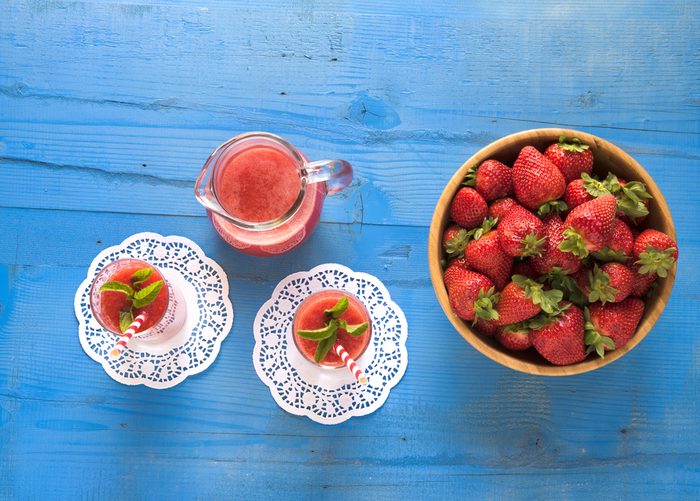
Low-fat dairy
Dairy is not just important for bone health — the protein in low-fat dairy products, such as yogurt and skim milk, also helps to maintain healthy blood pressure.
Recipe to try: Strawberry Yogurt Smoothie

Fortified soy products
If you have a lactose intolerance, or if you just prefer to avoid dairy, try fortified soy beverages, tofu or soybeans.
Recipe to try: One-Pan Ginger-Chili Baked Tofu
Next, discover why nutritionists never eat these so-called “healthy” foods.
